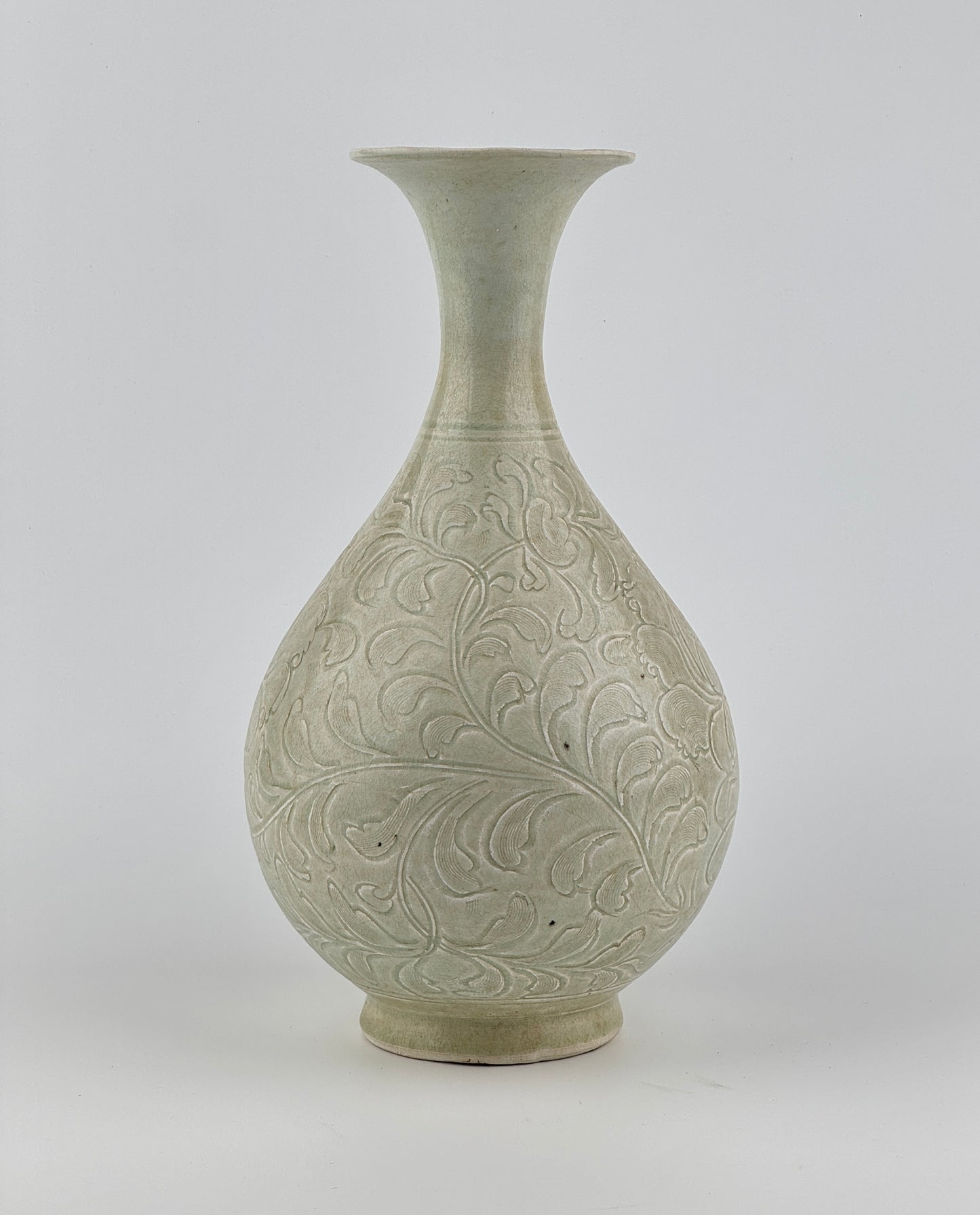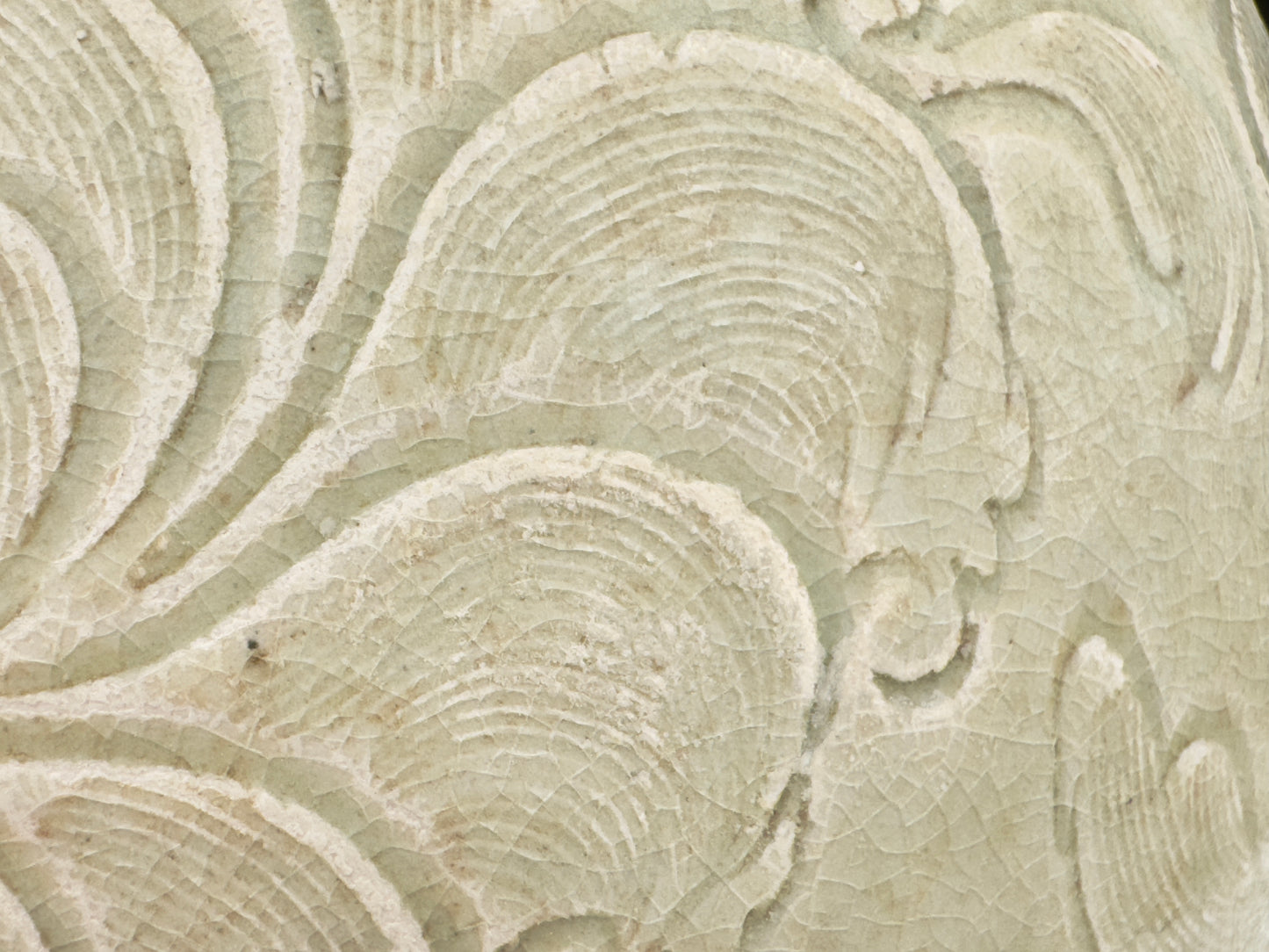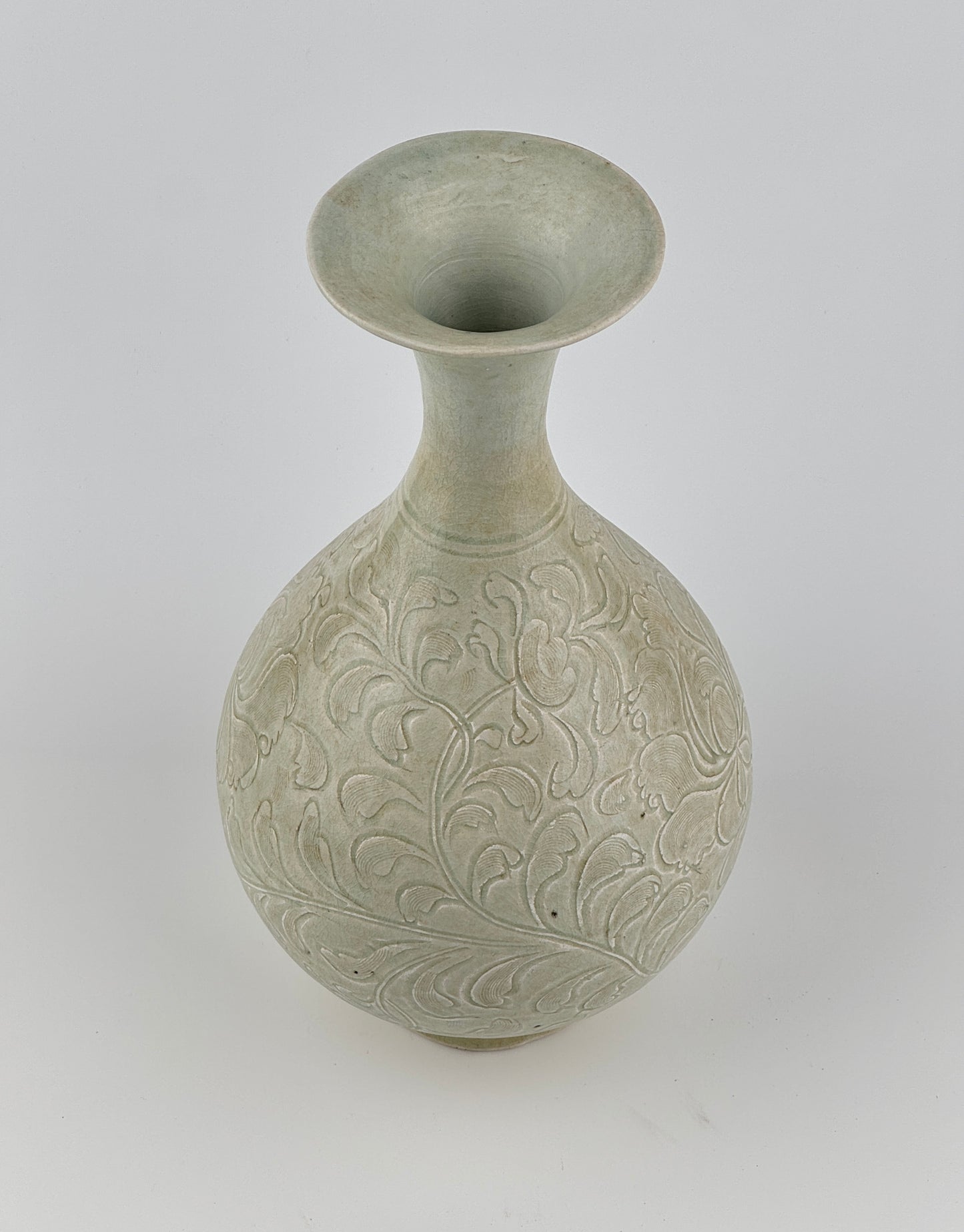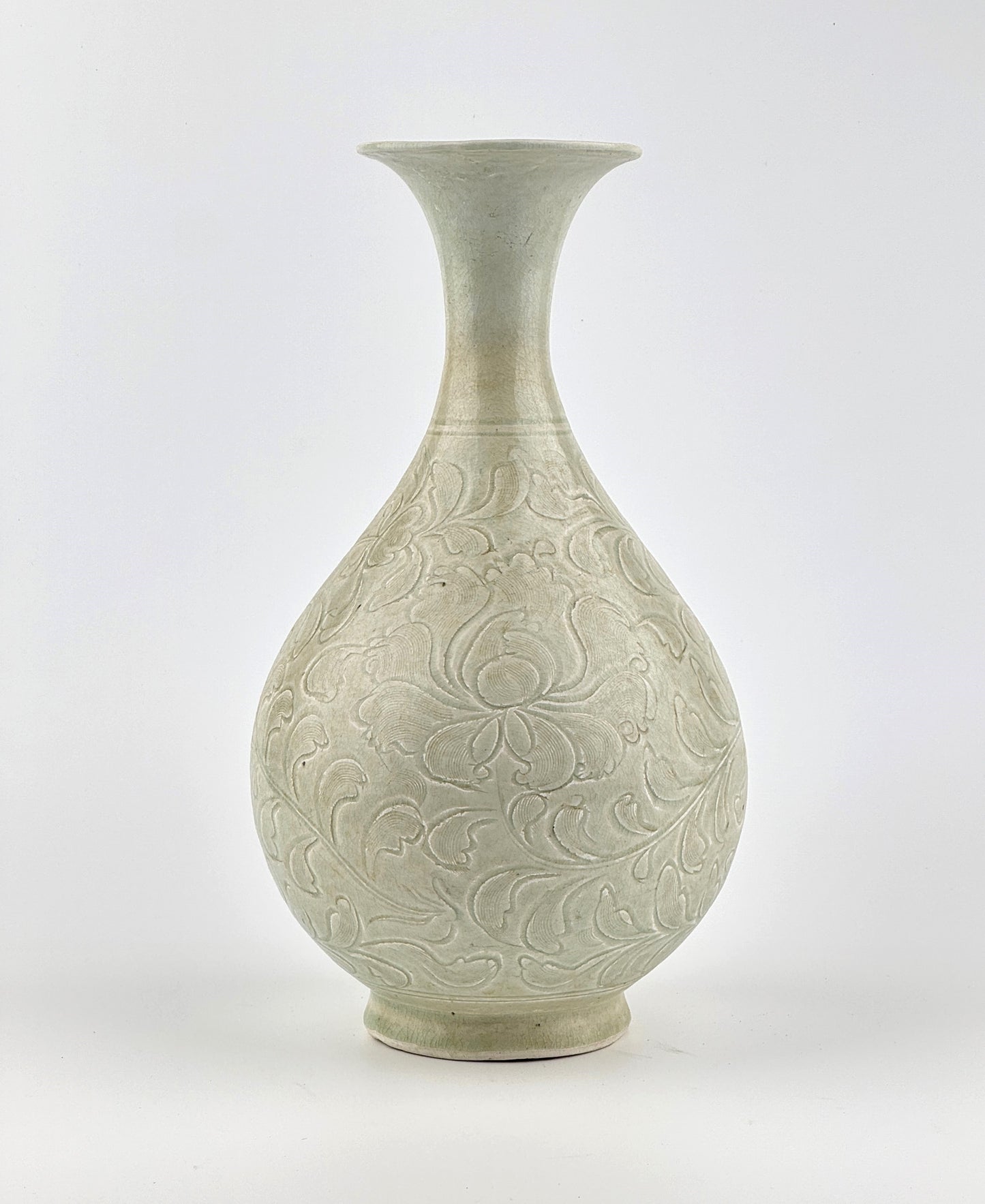AUA Oriental Art
QINGBAI CARVED YUHUCHUNPING VASE PORCELAIN, SONG DYNASTY
QINGBAI CARVED YUHUCHUNPING VASE PORCELAIN, SONG DYNASTY
Couldn't load pickup availability
Covered with a fine bluish glaze, the body entirely decorated with an incised decoration of elegant leafy scrolls and blooming lotuses. "Yuhuchunping" translates to 'spring wine bottle,' a name given due to the bottle's shape resembling one that would hold the springtime wine. This piece features very elegant curves, and its surface is decorated with intricate carvings, showcasing the sophistication and aesthetic sensibility of Song Dynasty ceramics.
Period : Song Dynasty(960-1279)
Type : Yuhuchunping
Medium : Qingbai Carved
Dimension : 34.5 cm(Height), 10.5cm(Mouth Diameter)
Condition : Good
Provenance : Acquired in late 1990s from Hongkong
Reference :
1) Christie's London 13 MAY 2014 - Fine Chinese Ceramics and Works of Art - Lot 284
(Price : 13,750 GBP / Type : Closely related)
https://www.christies.com/en/lot/lot-5789406
2) Christie's Paris 15 DEC 2010 - Art d'Asie - Lot268
(Price : 17,500 Euro / Type : Closely related)
https://www.christies.com/en/lot/lot-5396762
* Qingbai Ware
Qingbai ware, which translates to "blue-white ware," is a type of Chinese porcelain that was made at the Jingdezhen and other kilns in the porcelain-producing regions of China, primarily during the Song dynasty (960–1279) and continuing into the Yuan dynasty (1271–1368). It is known for its translucent quality and the pale blue-green glaze that characterizes most of its pieces.
The qingbai glaze was achieved using a small amount of iron in a reduction-fired atmosphere, which produced the subtle blue-green tint. The body of qingbai ware is typically made of a fine, white porcelain that is often referred to as 'artificial jade' due to its resemblance to the esteemed stone. The thinness of the body and the high firing temperatures used contributed to the translucent quality of the finished product.
Qingbai ware includes a range of items such as bowls, cups, vases, and ewers. The designs are usually simple and elegant, with an emphasis on the graceful lines and form of the objects. Decorative motifs, when present, are often incised, carved, or molded in relief and can include floral patterns, dragons, phoenixes, and other symbolic elements drawn from Chinese culture.
Over time, the technology and techniques used to produce qingbai ware evolved, leading to innovations in glaze and decoration that would influence later types of Chinese porcelain. Despite these changes, qingbai ware remains a distinguished example of the potters' art in Song and Yuan China, reflecting the refined aesthetic and cultural values of the period.
Share






















